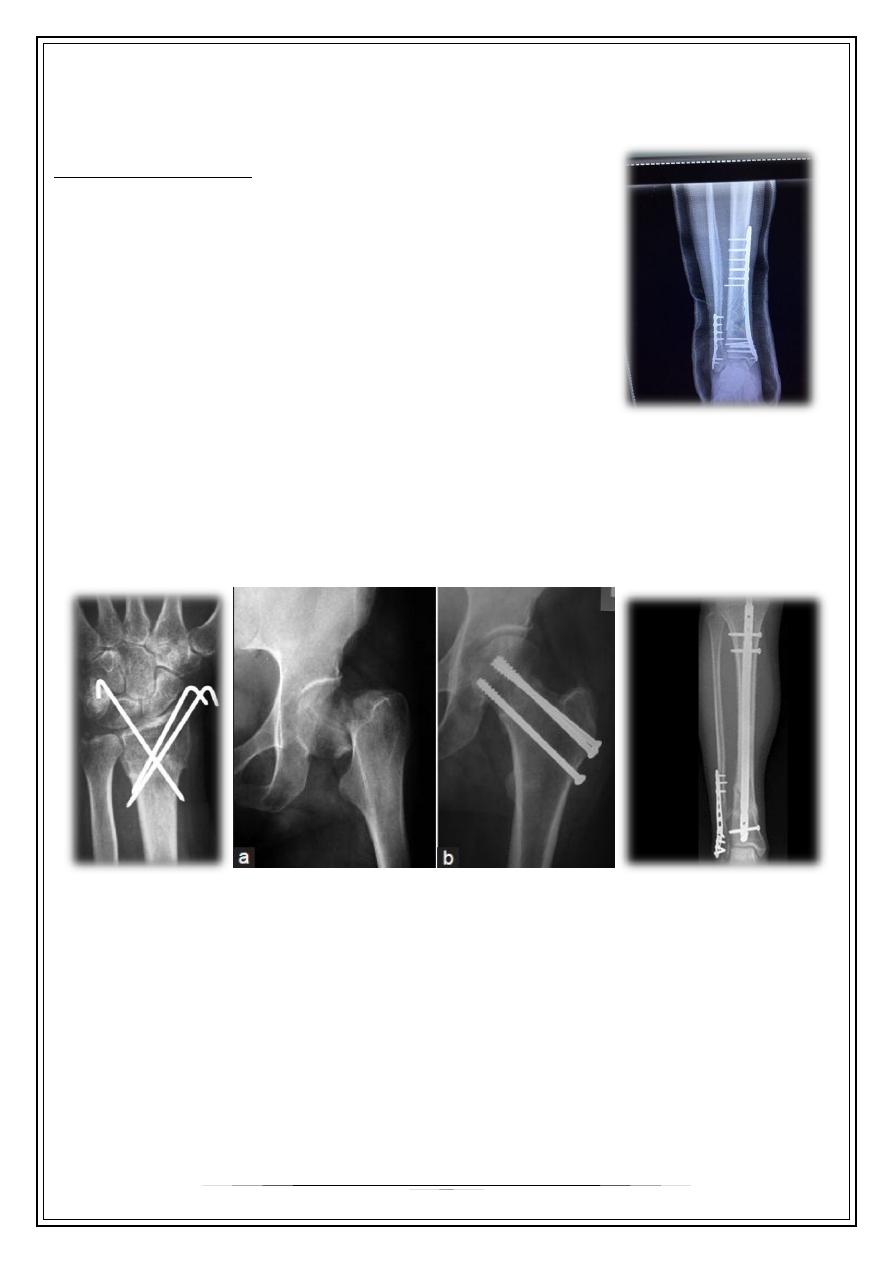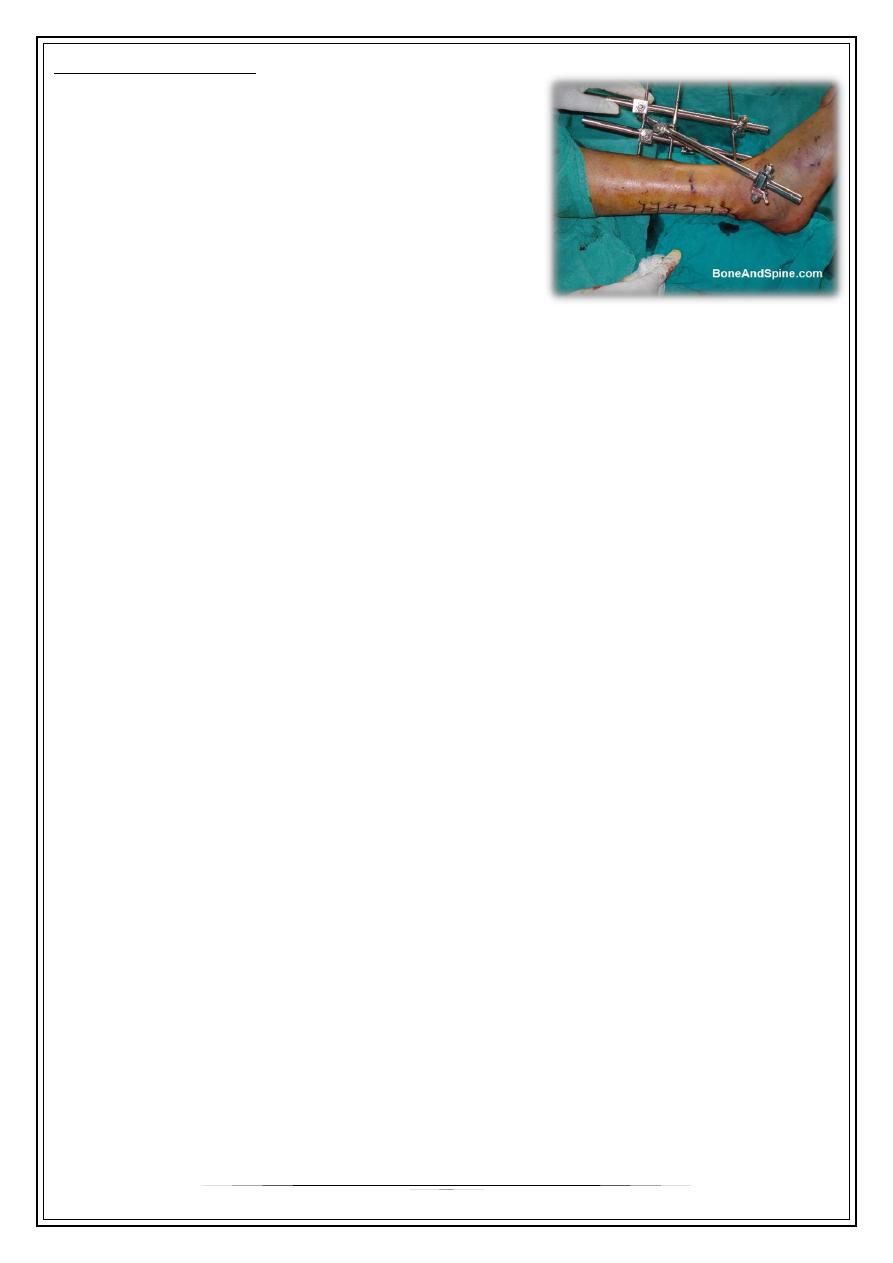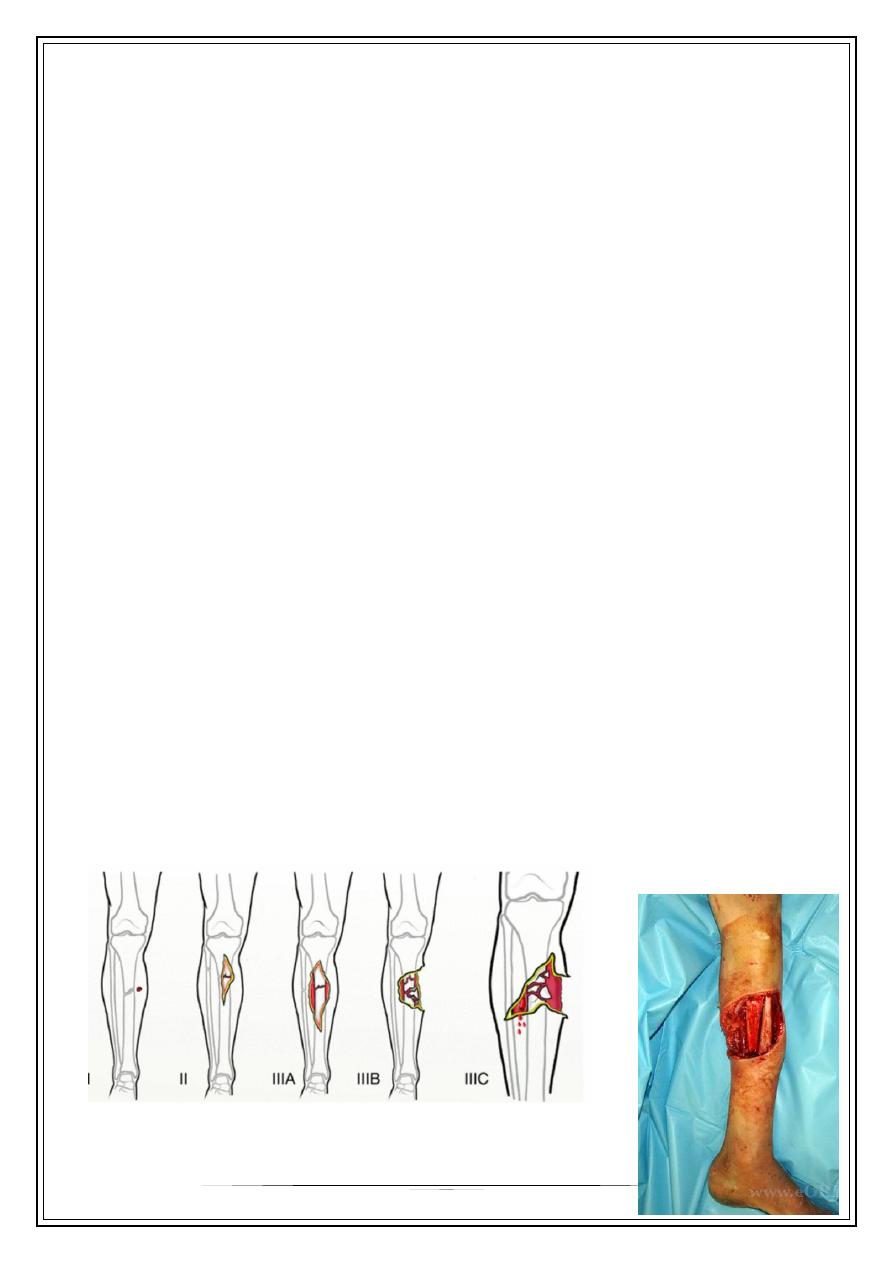
Fifth Stage
Orthopedics
Dr. Haider – Lecture 3
1
Principles of Fracture Treatment
–
Part 2
INTERNAL FIXATION
•
Bony fragment may be fixed with:
•
screws
•
transfixing pins or wires
•
a metal plate held by screws
•
An intramedullary nails
•
or a combination with these method
Indications
1. Fracture that cannot be reduced only by operation
2. Fracture that are inherently unstable and prone to displacement after reduction
3.Fracture with poor and slow union rate like:fracture of the femoral neck
4.Pathological fracture
Bone disease may prevent healing
5.Multiple fracture as Early fixation reduce risk of general complication
6. patient with severe nursing difficulty
Advantages:
•
Precise reduction
•
ORIF-open reduction and internal fixation
•
Immediate stability
•
Hold the fracture securely
•
Early movement
•
Reducde the incidence of ‘fracture disease ‘ like oedema,s tifness ,etc.

2
EXTERNAL FIXATION
Principle:
•
The bone is transfixed above and below the
fracture with screw or pins and or connected
to each other by rigid bars outside the skin
Indications:
•
Fracture with soft tissue injury
•
wound can be left open for inspection,
dressing and definitive coverage
•
Severely comminuted and unstable fracture
•
Fracture of the pelvis
•
Fracture associated with vessel injury
•
Infected fracture
•
Where internal fixation is not be suitable
•
Bone lengthening procedures
Advantages
•
technically quick and easy to perform
•
no soft tissue stripping;
•
ease of removing hardware;
•
risk of infection at the site of the fracture is minimal
Complications
•
Damage to soft tissue structure
•
(nerve , vesseles , joints )
•
Over distraction
•
(may delay or prevent union )
•
Pin track infection
•
( prevent by pin site care )
Exercise (Rehabilitation)
•
Prevention of edema
–
active exercise and elevation
–
Active exercise also stimulates the circulation. Prevents soft-tissue adhesion
and promotes fracture healing.
•
Preserve the joint movement
•
Restore muscle power
•
Functional activity

3
OPEN FRACTURES
A break in skin and underlying soft tissues leading directly to
communicating with the fracture
Emergency Management of Open Fracture:
•
A,B,C
•
Splint the limb
•
Sterile cover - prevent contamination
•
Look for other associate injury
•
Check distal circulation – is distal circulation satisfactory?
•
Check neurology – are the nerve intact?
•
AMPLE history- Allergies, Medications, Past medical history, Last meal, Events
•
Relieve pain
•
Tetanus prophylaxis
•
Antibiotics
•
Washout / Irrigation
•
Wound debridement
•
fracture stabilization ( according to grade)
•
Deal with soft tissue and skin injury.
•
Classification of open fractures

4
Thank You,,,
